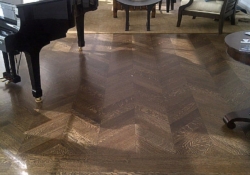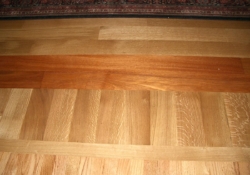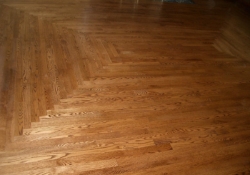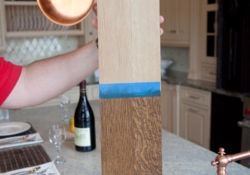Choosing a Wood Floor - Step 3 - Grain & Texture
STEP THREE: After the type and color palette for the wood flooring is decided upon, it’s time to choose the type and amount of grain pattern you want for your hardwood floor. In this context, think of the appearance of wood grain as a visual texture. The consistency and type of visual texture your floor exhibits is dependent upon wood species, how the flooring boards were cut, and on the grade of the boards.
Hardwood Flooring Wood Species
One of the alluring aspects of wood flooring is the beauty inherent in the grain of wood. When you visit a flooring dealer you’ll likely find dozens of species to choose from, each with its own unique visual texture, either muted or bold.
In truth, nearly 50% of hardwood floors in the US are either red oak or white oak because of the species’ moderate cost, durability and sustainability. Oak has a moderate to heavy grain pattern with fairly substantial color variations. When treated with a light stain, the grain in oak tends to be accentuated. A darker stain, as you might imagine, will tend to hide the grain. Maple, another popular species with approximately 10% of the market, has far less grain creating a more homogenous, consistent look to a floor. Mr. Floor works only with FCS certified lumber mills that practice sustainable harvesting.
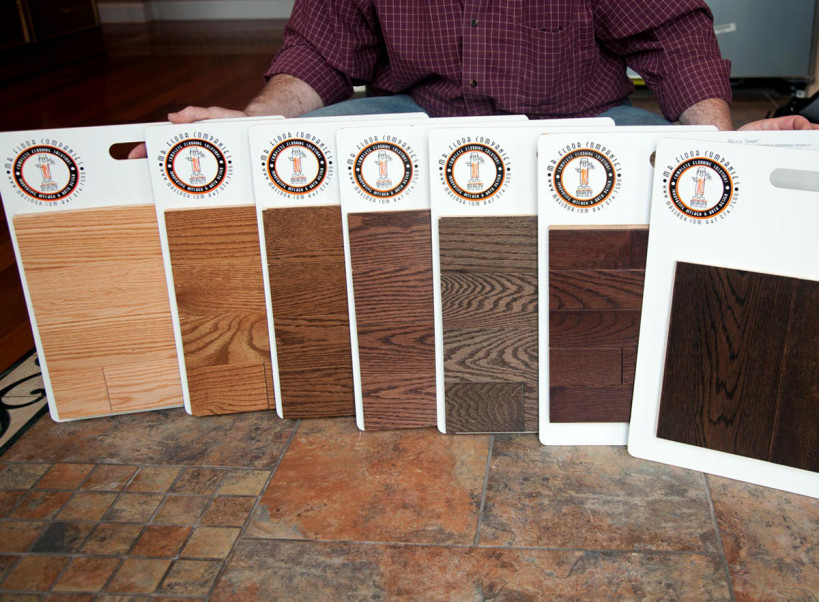
Of course, consumers often seek out specific species because of the unique color variations or bold patterns in the grain. For example, hickory is chosen because of its naturally contrasting streaks of light and medium brown. A focal point for any room in which it is installed, hickory is most often installed in wide planks to minimize the visual dissonance from board to board.
In the end, the species of wood chosen for your floor may combine aspects of both color and texture. It’s at this stage where having access to a showroom with numerous species stained in various hues can help you to make a more educated choice.
The Method Used to Cut Hardwood Flooring Affects Grain and Texture
It’s doubtful that many consumers would ask a flooring vendor the type of cut being used to produce their flooring. But, whether the wood is plainsawn, quartersawn, riftsawn or livesawn will have a huge impact on the grain and texture of the finished floor. As the graphic illustration below demonstrates, plainsawn planks tends to minimize the grain variation that one sees in a floor. By cutting largely with the grain, the growth rings are less visible. Quartersawn and riftsawn boards are cut against the grain, highlighting the variation caused by the capillary veining in the tree.
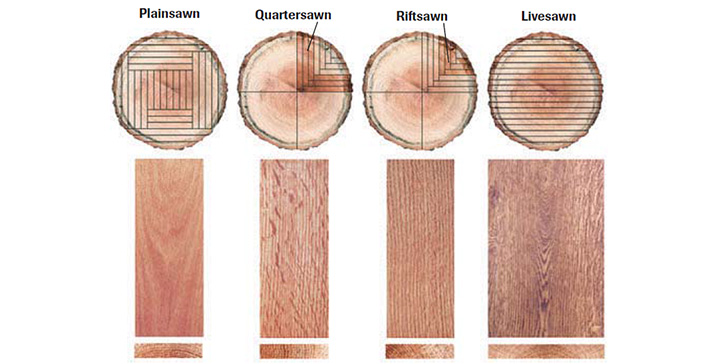
Indeed, this type of very specific knowledge is why we highly recommend that you choose a hardwood flooring specialist who is certified by either the National Wood Flooring Association or the American Hardwoods Association.
The Grade of Hardwood Flooring Affects Uniformity of Appearance
Last but not least, the grade of the boards used in your floor have an impact on the floor’s appearance. Wood flooring strips and planks come in several grades including Clear, Select & Better, No. 1 Common and No. 2 Common grades. Clear is the most expensive grade and features a very consistent appearance from board-to-board. Select & Better boards, typically cut from the heartwood, show no knots or other “character marks” that tend to disrupt the natural grain of the wood. By contrast, No. 2 Common boards can feature wide variations in color, knot holes, worm holes and other imperfections that some find rustically appealing.

